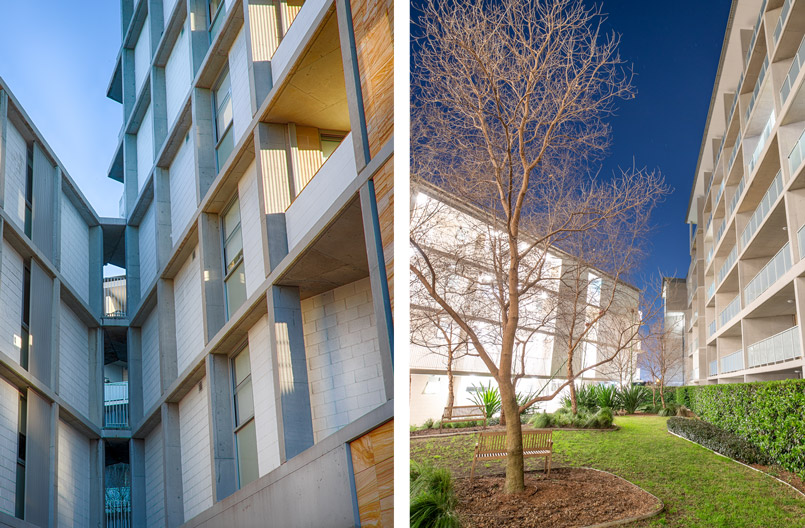
Revolution Apartments
A large triangular-shaped site adjacent to Marrickville Railway Station informed a design of three buildings around a central courtyard; with an 160m long façade stretching along the railway line. This proposition enabled units to be oriented to the light, the courtyard and the street edge; a rich diversity of environments within the single project.
Composed of robust materials and finishes, the project responds to the dense and gritty site adjacent to a railway line, whilst adding value to the area and complementing a heritage neighbourhood.
The inclusion of a central communal courtyard was key. Acting as a quiet space and green backdrop, it provides a change of pace from the urban noise below. The open space enables a necessary acoustic layer of quietness to perform the task of an entry foyer and communal space at once
The materials used throughout are basic, with volumes of form creating a resting architectural composition on the façades.
A forecourt to retail space on Illawarra Road extends the public domain and continues the prevalent retail and commercial activity of the precinct at street level. Deep, three metre façades engage with the public realm. The cantilevered building forms provide shelter for pedestrians from rain and sun without the imposition of a separate street awning. Highly articulated façades allow for a play of light and shadow.

Facing south to the railway line, the façade is broken into three distinct elements as the building steps down from the front to the rear, with each element divided up further as a distinct base, middle and top. This elevation is a carefully considered rhythmic interplay between screening elements in response to the adjacent railway corridor.
The development has created a densely populated village of 180 units, minutes from important urban infrastructure. Standing only 2.5 metres from the freight line, the design has maximised the use of a difficult site without sacrificing the amenity of units. The scale of the building protects others in the surrounding area from the noise of the railway line whilst delivering a façade that positively contributes to the public experience of the train station.

